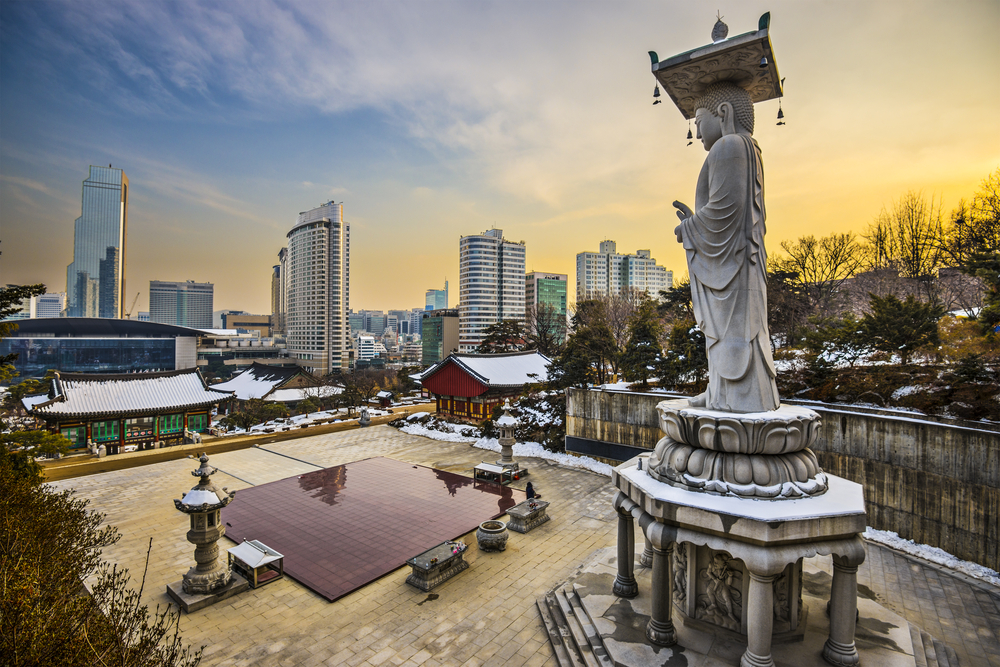The Growing Inequality in South Korea

Please note that we are not authorised to provide any investment advice. The content on this page is for information purposes only.
The South Korean economy advertises its international prowess through the popularity of global brand name products from Samsung Galaxy phones to the Hyundai Sonata. Hidden behind these triumphant global achievements is a phenomenon of widening economic polarisation. The national economy once praised for achieving rapid growth with relative equality has now turned into the second most unequal economy among the OECD countries.
The South Korean economy advertises its international prowess through the popularity of global brand name products from Samsung Galaxy phones to the Hyundai Sonata. Hidden behind these triumphant global achievements is a phenomenon of widening economic polarisation. The national economy once praised for achieving rapid growth with relative equality has now turned into the second most unequal economy among the OECD countries.
In the aftermath of the Asian Financial Crisis, South Korea embraced neoliberal policy prescriptions. This allowed Korean chaebols (large business conglomerates) to grow into global corporations accounting for a lion’s share of the production of national wealth. Meanwhile, the working class is becoming increasingly stratified and fragmented, as the middle class dwindles.
The labour market deregulation policies instituted since the crisis have combined two groups of working people to form a new underclass. These are the low-income, self-employed, and irregular workers. Both groups’ lives are characterised by low income, job insecurity, minimal social protection, and dismal prospects for promotion or social mobility. The percentage of self-employed in Korea’s labour force is high at 29 percent, compared to other OECD countries at 16 percent.
Most are concentrated in vulnerable, low value-added economic activities such as small retail businesses (35 percent) and restaurants (31 percent). Half of new small businesses go bankrupt within three years. The bottom 20 percent of self-employed make an annual income under US$10,000 with an average household debt of US$90,000. One-third identify as being in the lowest class in South Korean society with little prospect for upward social mobility.
There is also a large number of irregular workers who constitute over half of the total labour force, a larger percentage than in other OECD economies. A majority is women in their mid-thirties or over, employed in small businesses with less than five workers, in sectors such as services, agriculture, construction and manufacturing. They are subject to terminable labour contracts, paid on average 51 percent of a regular worker’s hourly wage and face discrimination in access to basic labour protection and social welfare programs. The majority of irregular workers identify as being in the lowest class in South Korea.
How was this new, insecure labour underclass created?
First, the chaebol rose to exercise immense influence on labour market restructuring. With capital market deregulation, chaebols’ globalisation drive and the state’s reduced regulatory power, South Korean capital became more powerful and concentrated. The top 10 chaebols’ asset value rose from 48 percent of GDP in 2003 to 84 percent in 2012. Chaebols use this economic power to influence elected politicians, national prosecutors and mainstream media to shape the direction of the policy agenda towards labour market flexibility and minimal social protection. Samsung, for instance, amassed a slush fund worth US$4.5 billion, hid the illegal fund under borrowed-name stocks and used the money to lobby prosecutors, lawyers, politicians and National Tax Service officials.
Large conglomerates now also employ fewer people. They have collectively downsized from 1 million workers (8.3 percent of all employed) in 1998 to 0.8 million (6.7 percent) in 2010. They rely heavily upon in-company subcontracting and outsourcing to squeeze production costs. Intense competition forces small- and medium-sized subcontractors for chaebol to cut their labour costs by increasingly relying on irregular workers.
Second, labour unions share the responsibility of having creating this insecure class. They failed to stand for the interests of a broad spectrum of working people. The average unionisation rate is about ten percent, primarily coming from regular, male workers in large corporations. Among regular workers, 14 percent are unionised compared to 1.7 percent of irregular workers. Women workers are severely under-represented. As national unions remained organisationally parochial, with barely enough influence to defend their own members’ interests, they were unable to make a meaningful intervention in the labour policymaking process.
The absence of a pro-labour party in South Korea’s institutional politics is the third force behind the creation of an insecure underclass. Organisationally fractured political parties deal with repetitive splits and mergers. They have lined up along regional ties instead of policy differences. The emergence of ‘left’ parties to represent distributional issues faced suppression until the foundation of the Democratic Labor Party. And policy debates over labour and social protection have been shunned in electoral competition, at least until the local elections of 2010.
Expectations are that democratic institutions will make policy interventions to cushion the consequences of neoliberal deregulation, but political elites in South Korea failed to represent the interests of the working class and to act as a credible arbiter when organised labor and powerful capital clashed over labour market flexibility. The lack of timely policy interventions has led to South Korea’s working class to become increasingly fragmented and insecure.
The birth of the insecure class in South Korea is republished with permission from East Asia Forum




